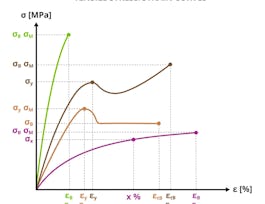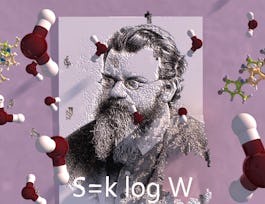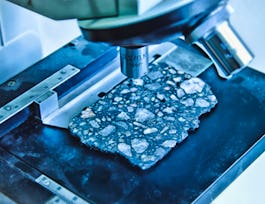In this course, we will look at phase diagrams and how they are used to determine the state of the material as a function of temperature and composition. We will also investigate how the microstructure and materials properties can be manipulated as a function of temperature and composition. A special focus will be on the eutectic phase diagram.



Phase Diagrams I & II
This course is part of Materials Science for Technological Application Specialization

Instructor: Terry Alford
Sponsored by Syrian Youth Assembly
(17 reviews)
Recommended experience
What you'll learn
The use of principles of phase diagrams to predict microstructures and properties of metals and alloys.
Details to know

Add to your LinkedIn profile
2 assignments
See how employees at top companies are mastering in-demand skills

Build your subject-matter expertise
- Learn new concepts from industry experts
- Gain a foundational understanding of a subject or tool
- Develop job-relevant skills with hands-on projects
- Earn a shareable career certificate


Earn a career certificate
Add this credential to your LinkedIn profile, resume, or CV
Share it on social media and in your performance review

There are 5 modules in this course
In this course, we will look at phase diagrams and how they are used to determine the state of the material as a function of temperature and composition. We will also investigate how the microstructure and materials properties can be manipulated as a function of temperature and composition. A special focus will be on the eutectic phase diagram.
What's included
1 video1 reading
In this module, we explain the concepts of solubility, solubility limit, saturation and solubility limit lines (solvus) on phase diagrams.
What's included
3 videos6 readings1 assignment1 discussion prompt
The eutectic phase diagram is important for solder ball and inter-metal interconnects in semiconductor industry. In this module we discuss eutectic phase diagrams.
What's included
2 videos4 readings1 discussion prompt
In this module, we examine eutectic microstructure and eutectic properties.
What's included
2 videos4 readings1 discussion prompt
In this module, you will explore hypoeutectic and hypereutectic alloys and their composition and cooling impacts microstructures.
What's included
4 videos6 readings1 assignment1 peer review2 discussion prompts
Instructor

Offered by
Why people choose Coursera for their career




Recommended if you're interested in Physical Science and Engineering

Arizona State University

University of California, Davis

Carnegie Mellon University

Arizona State University

Open new doors with Coursera Plus
Unlimited access to 10,000+ world-class courses, hands-on projects, and job-ready certificate programs - all included in your subscription
Advance your career with an online degree
Earn a degree from world-class universities - 100% online
Join over 3,400 global companies that choose Coursera for Business
Upskill your employees to excel in the digital economy


